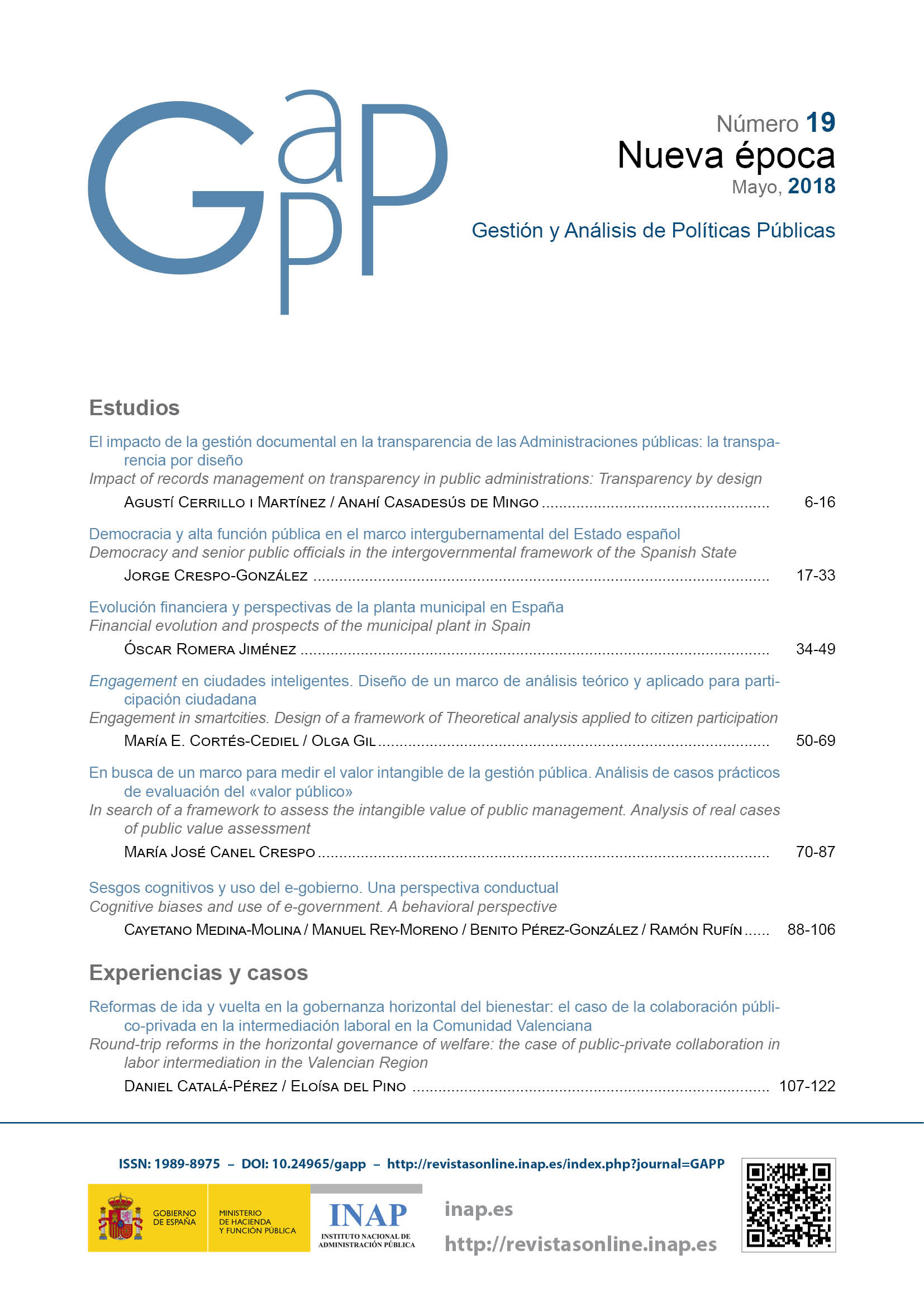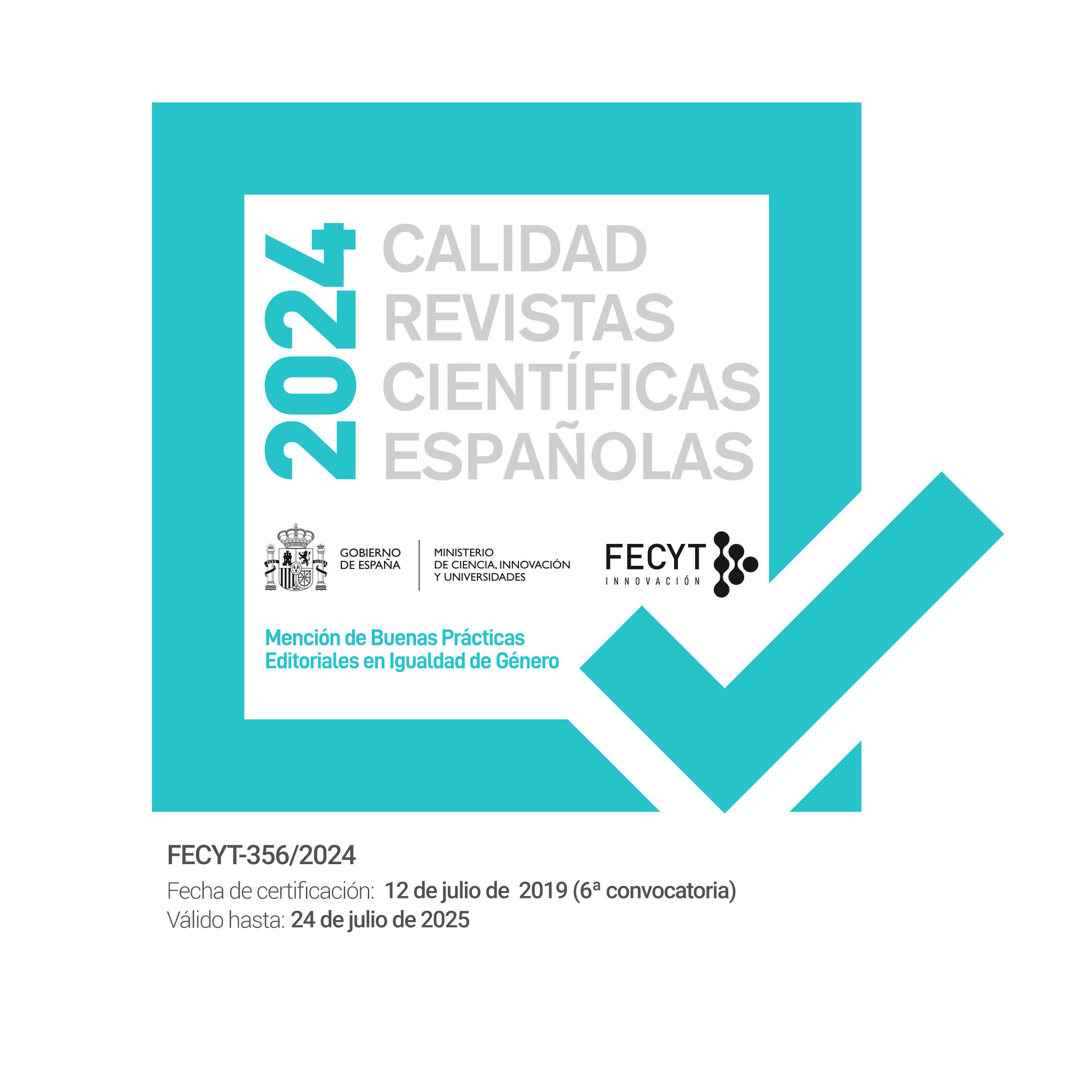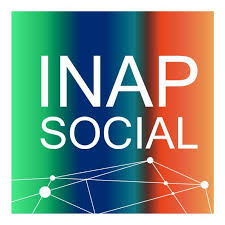En busca de un marco para medir el valor intangible de la gestión pública. Análisis de casos prácticos de evaluación del “valor público”
DOI:
https://doi.org/10.24965/gapp.v0i19.10446Palabras clave:
Comunicación Administración Pública, bien intangible, evaluación comunicación, valor público, impacto comunicativoResumen
¿Qué aporta a la sociedad la gestión de la Administración Pública y cómo se puede medir? El artículo tiene como objetivo identificar qué aspectos tiene que tener en cuenta un gestor público para diseñar la evaluación ad hoc del valor público intangible que tiene su gestión. La metodología triangula el análisis conceptual con la observación empírica. Se identifican y exploran relaciones entre los planteamientos sobre la evaluación de las relaciones públicas y comunicación organizacional, bienes intangibles y la corriente denominada Public Value. Con las conclusiones de esta exploración se elaboran unos criterios el análisis de casos prácticos, es decir, se realiza un meta-análisis de action-research. El análisis revela que evaluar la gestión pública con el enfoque del valor público intangible implica registrar tanto el comportamiento de la organización como la reacción de la sociedad y, por tanto, computar efecto acumulado, pudiendo así proporcionar medidas del impacto; facilita además calibrar la brecha que hay entre gestión real y gestión percibida, así como explorar sus causas. Por último y en consecuencia, se explicitan los niveles, áreas y enfoques que ha de tener en cuenta un líder público para la evaluación de su gestión.
Descargas
Citas
AMEC (INTERNATIONAL ASSOCIATION FOR THE MEASUREMENT AND EVALUATION OF COMMUNICATION) (2015). Barcelona Principles 2.0. London, UK: Author. Extraído de http://amecorg.com/wp-content/uploads/2015/09/Barcelona-Principles-2.0-development-and-detailed-changes.-7-September-2015.pdf, ultimo acceso 13 de abril de 2018.
BELL, E. & BRIDGEMAN, T. (2017). “Why management learning matters”. Management Learning, 48 (1), 3-6. https://doi.org/10.1177/1350507616679058.
ARVIDSSON, R. (1986). “Performance evaluation”, en KAUFMAN, F. (ed.). Guidance, control and evaluation in the public domain Berlin. Berlin: Walter de Gruyter.
BOND, S. & DENT, P. (1998). “Efficient management of public sector assets. The call for correct evaluation criteria and techniques”, Journal of Property Valuation and Investment, 16 (4), 369-385. https://doi.org/10.1108/14635789810228169.
BOZEMAN, B. (2007). Public values and public interest: Counterbalancing economic individualism. Georegetown, D. C.: Georgetown University Press.
BOZEMAN, B. & JOHNSON, J. (2015). “The Political Economy of Public Values. A Case for the Public Sphere and Progressive Opportunity”, The American Review of Public Administration, 45 (1), 61-85. https://doi.org/10.1177/0275074014532826.
BOZEMAN, B. & SAREWITZ, D. (2011). “Public value mapping and science policy evaluation”, Minerva, 49 (1), 1-23. https://doi.org/10.1007/s11024-011-9161-7.
BRACCI, E., DEIDDA GAGLIARDO, E. & BIGONI, M. (2014). “Performance management systems and public value strategy: A case study”, en Public value management, measurement and reporting (págs. 129-157). Emerald Group Publishing Limited. https://doi.org/10.1108/s2051-663020140000003006.
BRYSON, J. M., CROSBY, B. C. & BLOOMBERG, L. (2015). “Introduction”, en Public Value and Public Administration (págs. xvii-xxvi). Washington, DC: Georgetown University Press.
CANEL, M. J. & LUOMA-AHO, V. (2019). Public Sector Communication. Closing Gaps Between Citizens and Organizations. Boston: Wiley-Blackwell.
CANEL, M. J. y LUOMA-AHO, V. (n. d. en prensa). “Intangible assets and public value”, en LUOMA-AHO, V. y CANEL, M. J. (eds.), Handbook of Public Sector Communication. Wiley-Blackwell.
CANEL, M. J. & PIQUEIRAS, P. y ORTEGA, G. (2017). La comunicación de la Administración Pública. Conceptos y casos prácticos de los bienes intangibles. Madrid: Instituto Nacional de Administración Pública.
CANEL, M. J. & LUOMA-AHO, V. (2015). Crisis en la Administración Pública, oportunidad para la intangibilidad, en VILLAFAÑE, J. (ed.). La Comunicación empresarial y la gestión de los intangibles en España y Latinoamérica (págs. 121-132). Madrid: Pearson.
CANEL, M. J. (en prensa). Comunicación de la Administración Pública. Para Gobernar con la Sociedad. México, D. F.: Fondo de Cultura Económica.
CARMELI, A. & TISHLER, A. (2005). “Perceived organizational reputation and organizational performance: an empirical investigation of industrial enterprises”. Corporate Reputation Review, 8 (1), 13-30. https://doi.org/10.1057/palgrave.crr.1540236.
COATS, D. & PASSMORE, E. (2008). Public value: The next steps in public service reform. London: Work Foundation.
DEPARTMENT OF CULTURE AND THE ARTS (2014). “Public value measurement framework. Measuring the quality of the arts”. Extraído de http://www.dca.wa.gov.au/Documents/New%20Research%20Hub/Research%20Documents/Public%20Value/PVMF_Measuring_Quality_Arts_Research_Hub_08_14.pdf, último acceso 28 de julio de 2018.
Diccionario de la Real Academia Española, http://dle.rae.es/srv/search?m=30&w=evaluar.
EC (European Commission) (2014). “Measuring the European Commission’s communication: Technical and methodological report”. Extraído de http://ec.europa.eu/dgs/communication/about/evaluation/index_en.htm, último acceso 28 de julio de 2018.
GREGORY, A. (2015). Planning and managing public relations campaigns. London: Kogan Page.
GUARINI, E. (2014). “Measuring public value in bureaucratic settings: opportunities and constraints”, en Public value management, measurement and reporting (págs. 301-319). Emerald Group Publishing Limited. https://doi.org/10.1108/s2051-663020140000003013.
JAMES, O. (2009). “Evaluating the expectations disconfirmation and expectations anchoring approaches to citizen satisfaction with local public services”, Journal of Public Administration Research and Theory, 19 (1), 107-123. https://doi.org/10.1093/jopart/mum034.
JAMES, O. & MOSELEY, A. (2014). “Does performance information about public services affect citizens’perceptions, satisfaction, and voice behaviour? Field experiments with absolute and relative performance information”. Public Administration, 92 (2), 493-511.
JØRGENSEN, T. B. & BOZEMAN, B. (2007). “Public values an inventory”. Administration & Society, 39 (3), 354-381. https://doi.org/10.1177/0095399707300703.
LUOMA-AHO, V. (2008). “Sector reputation and public organisations”, International Journal of Public Sector Management, 21 (5), 446-467. https://doi.org/10.1108/09513550810885778.
MACNAMARA, J. (2015). “Overcoming the measurement and evaluation deadlock: A new approach and model”, Journal of Communication Management, 19 (4), 371-387.
MACNAMARA, J. (2017). Evaluating public communication: Exploring new models, standards, and best practice. Abingdon, UK: Routledge. https://doi.org/10.4324/9781315391984.
MACNAMARA, J., LWIN, M., ADI, A. & ZERFASS, A. (2015). Asia Pacific Communication Monitor 2015/16: The state of strategic communication and public relations in a region of rapid growth. Survey results from 23 countries. Asia Pacific Association of Communication Directors (APACD) and Helios Media. Extraído de http://www.communicationmonitor.asia.
MEIER, K. J. & O’TOOLE, L. J. (2011). “Comparing public and private management: Theoretical expectations”, Journal of Public Administration Research and Theory, mur027, último acceso 28 de julio de 2018. https://doi.org/10.1093/jopart/mur027.
MEYNHARDT, T. (2009). “Public value inside: What is public value creation?”, International Journal of Public Administration, 32 (3-4), 192-219.
MEYNHARDT, T. (2015). Public value: turning a conceptual framework into a scorecard. Actas del congreso Creating Public Value in a Multi-Sector, Shared-Power World, Minneapolis, MN, USA.
MEYNHARDT, T. & BARTHOLOMES, S. (2011). “(De) Composing public value: In search of basic dimensions and common ground”, International Public Management Journal, 14 (3), 284-308. https://doi.org/10.1080/10967494.2011.618389.
MEYNHARDT, T., GOMEZ, P. & SCHWEIZER, M. (2014). “The Public Value Scorecard: what makes an organization valuable to society?”, en Performance, 6, 1-8).
MOORE, M. H. (2013). Recognizing public value. Cambridge: Harvard University Press. https://doi.org/10.4159/harvard.9780674067820.
MOORE, M. H. (2014). “Public value accounting: Establishing the philosophical basis”, Public Administration Review, 74 (4), 465-477. https://doi.org/10.1111/puar.12198.
MOORE, M. H. (2015). “Creating a Public Value Account and Scorecard”, en BRYSON, J. M., CROSBY, B. C. & BLOOMBERG, L. (ed.), Public Value and Public Administration. Georgetown: Georgetown University Press.
PAGE, S. B., STONE, M. M., BRYSON, J. M. & CROSBY, B. C. (2015). “Public Value Creation by Cross-Sector Collaborations: A Framework and Challenges of Assessment”, Public Administration, 93 (3), 715-732.
PETTY, R. & GUTHRIE, J. (2000). “Intellectual capital literature review: measurement, reporting and management”, Journal of Intellectual Capital, 1 (2), 155-176. https://doi.org/10.1108/14691930010348731.
QUEIROZ, A. B., CALLÉN, Y. F. & CINCA, C. S. (2005). “Reflexiones en torno a la aplicación del capital intelectual en el sector público”. Spanish Journal of Finance and Accounting / Revista Española de Financiación y Contabilidad, 34 (124), 211-245. https://doi.org/10.1080/02102412.2005.10779547.
SANDERS, K. & CANEL, M. J. (2015). “Mind the gap: Local government communication strategies and Spanish citizens’ perceptions of their cities”, Public Relations Review, 41 (5), 777-784. https://doi.org/10.1016/j.pubrev.2015.06.014.
SAUNDERS, M. (2000). “Beginning an evaluation with RUFDATA: theorizing a practical approach to evaluation planning”. Evaluation, 6 (1), 7-21. https://doi.org/10.1177/13563890022209082.
STACKS, D. W. & MICHAELSON, D. (2014). A practitioner’s guide to public relations research, measurement, and evaluation (2.ª ed.). New York, NY: Business Expert.
STOKER, G. (2006). “Public value management: a new narrative for networked governance?”, The American Review of Public Administration, 36 (1), 41-57.
TALBOT, C. (2009). “Public Value – The Next «Big Thing» in Public Management?”, International Journal of Public Administration, 32 (3-4): 167-170. https://doi.org/10.1080/01900690902772059.
VOLK, S. C. (2016, March). A systematic review of 40 years of public relations evaluation and measurement research: Looking into the past, the present, and the future. Paper presented at the 19th Annual International Public Relations Research Conference, Miami, Florida, USA. https://doi.org/10.1016/j.pubrev.2016.07.003.
VAN DE WALLE, S. & BOUCKAERT, G. (2003). “Public service performance and trust in government: the problem of causality”. International Journal of Public Administration, 26 (8-9), 891-913. https://doi.org/10.1081/pad-120019352.
WANG, B. and CHRISTENSEN, T. (2017). “The Open Public Value Account and Comprehensive Social Development. An Assessment of China and the United States”, Administration and Society, 49 (6), 852-881. https://doi.org/10.1177/0095399715587522.
WELCH, J., RIMES, H. & BOZEMAN, B. (2015). “Public value mapping”, en BRYSON, J., CROSBY, B. y BLOOMBERG, L., Public Value and Public Administration (págs. 131-146). Washington, DC: Georgetown University Press.
WOOD JR, T. (2017). “Resisting and surviving the mainstream scientific model: Findings on social relevance and social impact in the tropics”. Management Learning, 48 (1), 65-79. https://doi.org/10.1177/1350507616659832.
WORLD BANK (2011). The changing wealth of nations: measuring sustainable development in the new millennium. Washington, DC: World Bank Publications. https://doi.org/10.1596/978-0-8213-8488-6.
WORLD BANK (2006). Where is the wealth of nations? Measuring capital for the 21st century. Washington, DC: World Bank Publications. https://doi.org/10.1596/978-0-8213-6354-6.
ZERFASS, A. (2008). “Corporate communication revisited: Integrating business strategy and strategic communication”, en ZERFASS, A., VAN RULER, B. & SRIRAMESH, K. (eds.), Public relations research. European and international perspectives and innovations (págs. 65-96). Wiesbaden, Germany: VS Verlag für Sozialwissenschaften. https://doi.org/10.1007/978-3-531-90918-9_5.












